I'm wondering if there are any diabetic rotting feet, rotting legs? What should I do?
As a diabetologist, I've seen too many of these patients, seen their sadness, regret and pain and despair.
Diabetic foot and lower extremity skin injuries are acute lesions that occur on top of the chronic complications of diabetes and need to be managed as soon as possible.
For patients with so-called "rotting feet and legs", they should go to the hospital as soon as possible for treatment. In addition to stabilizing blood glucose as soon as possible, the vascular and neurological conditions of the lower limbs should also be fully evaluated to determine the next step in the treatment plan.
Many patients who develop diabetic foot have already experienced blockage of blood vessels in the lower extremities and severe impairment of nerve function, which is also a result of the failure of the patient's protective mechanisms to function after minor injuries to the foot, which are not treated in a timely manner, resulting in the wound getting bigger and bigger, spreading upward, and then appearing to requireAmputation to save lifeThe tragic consequences of the
If the wound is not big, there is no penetrating ulcer, tendons, bones, etc. are not damaged, then as soon as possible to stabilize blood glucose, improve the local blood supply, nutrient nerve and other treatments, local wound dressing, remove necrotic tissues, using physical methods to promote the new growth of the local granulation, some of the diabetic foot can be slowly healed, to achieve the goal of preserving the integrity of the foot.
Some hospitals have also developed treatments such as flap transfers and vascular interventions, which have also yielded relatively good results.
In general, the treatment of diabetic foot, which takes a long time, costs a lot, and has unsatisfactory therapeutic effects, and it also requires cooperation between various departments, such as sports disciplines, orthopedics, vascular surgery and endocrinology for cooperation, is a kind of disease that is a headache for hospitals at all levels.
Therefore, preventing diabetic foot and skin damage is the fundamental measure to prevent "rotten feet and legs".
Keep your blood sugar steady:Cooperate with your diabetes doctor and adopt appropriate treatment programs to keep your blood sugar within a more desirable range. Try to keep your blood pressure and lipids as normal as possible, and actively pursue antiplatelet therapy as early as possible to delay the onset of atherosclerosis.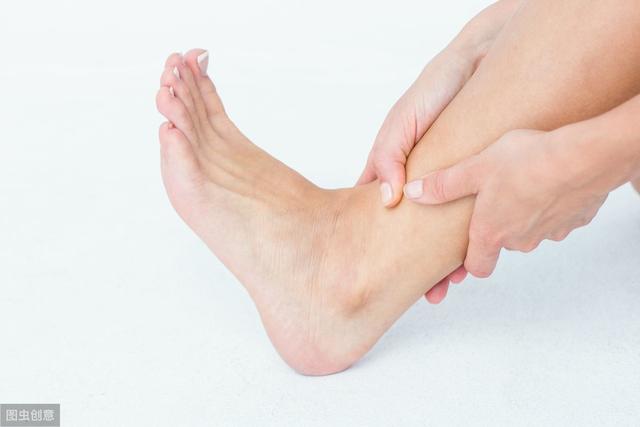
Pay attention to foot protection:Quit smoking, don't walk barefoot, don't wear new shoes or inappropriate socks, make sure your feet are clean and warm, and have a family member assist with foot wash preparation and nail clipping.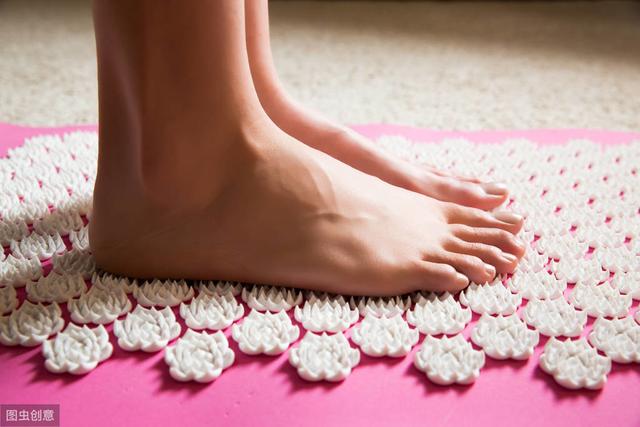
Prompt treatment of abnormal foot sensations:When there is numbness and pain in the lower limbs, or intermittent claudication during walking, ants or cotton feeling in the feet, etc., it is necessary to go to the hospital for lower limb vascular Doppler examination and neurological examination, and timely treatment of nutritional nerve.
To summarize: the fundamental measure to prevent the emergence of diabetic foot is to stabilize blood glucose, and if there is abnormal pain, etc., we should promptly ask the hospital for examination and treatment. It is very important to keep the blood pressure, blood lipid and blood viscosity normal, and carry out anti-platelet therapy as early as possible to delay the appearance of atherosclerosis. Usually pay attention to the protection of the feet, to prevent the appearance of skin damage, appear to the hospital for standardized treatment, do not treat yourself.
I'm Dr. Sun, pay attention to Dr. Sun talk about sugar, continue to learn more quality health knowledge, help please like, have questions please leave a message, will reply!
The prevalence of foot ulcers among diabetic patients is 4-10%.
What is a diabetic foot?
Diabetic foot: foot infections, ulcers and/or deep tissue destruction in diabetic patients due to abnormalities of the distal nerves of the lower extremities and varying degrees of vasculopathy.
Diabetic high-risk foot: diabetic patients without foot ulcers but with peripheral neuropathy, regardless of the presence of foot deformities or peripheral arterial lesions or a history of foot ulcers or amputations (toes).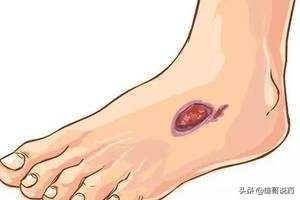
What are the clinical manifestations of diabetic foot
Neuropathy manifestations: dry and sweatless skin of the affected limb, tingling, burning pain, numbness, hypesthesia or absence of sensation at the extremity, sock-like changes, and a feeling of cotton wool on the feet when walking.
- Lower extremity ischemic manifestations:
(1) Skin dystrophy, muscle atrophy, dry skin with poor elasticity, decreased skin temperature, hyperpigmentation, weakened or disappeared arterial pulsations at the extremities, and the patient may be combined with intermittent claudication of the lower limbs.
(2) With the progression of the lesion, resting pain may develop, gangrene may appear at the toe end, ulcers may appear at the pressure area of the heel or metatarsophalangeal joint, and some patients may have limb infections.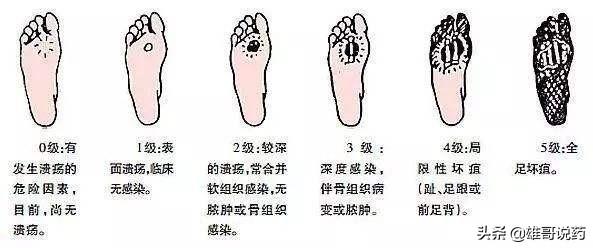
patientsWhat kind of tests will be done?
Neurological examination: Ø10g nylon wire examination method ØVibratory sensation ØAnkle reflex, pain, temperature sensation ØNerve conduction velocity
- Systematic examination of vascular lesions: Ø Physical examination Ø Skin temperature examination Ø Ankle artery-brachial artery blood pressure ratio (normal value 0.9-1.3) Ø Transcutaneous partial pressure of oxygen Ø Angiographic examination
Treatment goals for the diabetic foot
- Prevent the progression of systemic atherosclerotic disease, prevent cardiovascular and cerebrovascular events, and reduce mortality in patients with diabetic foot;
- Preventing ischemia-induced ulcers and gangrene of the extremities, preventing amputation or lowering the plane of amputation, and improving the functional status of the lower limbs in patients with intermittent claudication.
Pharmacologic treatment of the diabetic foot
Vasodilator pharmacotherapy: Ø cilostazol Ø beclomethasone sodium Ø sargramostim hydrochloride Ø prostaglandin injection
Antiplatelet drug therapy: Ø clopidogrel in combination with aspirin
- Anticoagulant drugs: Ø Heparin Ø Low molecular heparin Ø Oral anticoagulants

How to prevent diabetic foot
Regularly screen patients for risk factors for diabetic foot
Educate patients, their families and relevant medical personnel on foot protection
Wear appropriate footwear
Removing and correcting factors that predispose to ulcers
How to take care of your diabetic foot
1. Check your feet every day, especially between the toes, sometimes you need an experienced person to help you check your feet
2. Wash your feet regularly and dry them with a dry cloth, especially between the toes
3. The temperature of the water when washing feet should be appropriate, less than 37 ℃
4. It is not advisable to use hot water bags, electric heaters and other items to keep the feet warm directly.
5. Avoid walking barefoot; avoid trimming calluses or toenails on your own
6. Check for foreign objects or abnormalities in shoes before wearing them
7. Do not wear socks or shoes that are tight or have raw edges
8. Dry foot skin can use ointment skin care products; change socks every day, do not wear socks higher than the knee
I'm wondering if there are any diabetic rotting feet, rotting legs? What should I do?
Hello, am I Pharmacist Wang? I'm happy to answer this question.
Diabetic rotting feet and legs are a common complication of diabetes - the diabetic foot.
Diabetic foot is a disease that develops in diabetic patients as a result of infection, ulcer formation, or destruction of deep tissues in the lower extremities due to combined neuropathy and various degrees of peripheral vascular disease. A small wound can lead to localized tissue ulceration and necrosis, and in the case of deep tissue infection, it can promote ulcer development and is likely to result in consequences such as amputation.
In general, diabetic foot does not go unnoticed, and there are a number of symptoms to be alert to in the early stages of diabetic foot development.
The perception of the feet becomes weaker,Skin abnormalities of the feet,Numbness and pain in feet,Difficulty in healing foot wounds and other problems.
Once the diabetic foot occurs, if the early standardized treatment, improve blood supply, improve its nerve nutrition, integrated control therapy, timely control of infection, can avoid its continued deterioration.
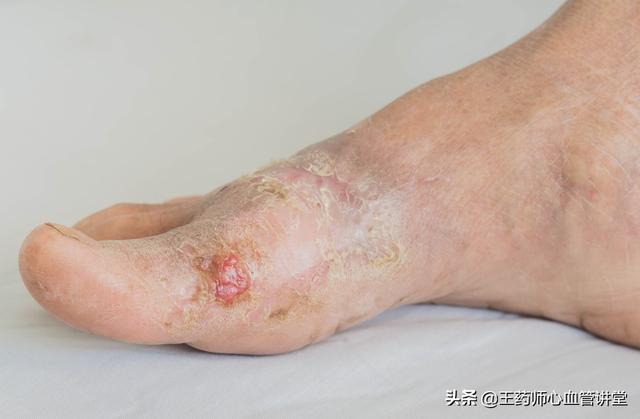
1. Control blood sugar
Good control of blood glucose is the basis for the prevention of various complications, diabetic patients should follow the doctor's instructions to take glucose-lowering drugs or insulin injections on time, in addition to diet and daily life should also do a good job to actively cooperate with the regular monitoring of blood glucose.
2. Do a good job of foot protection
Diabetic patients should consciously protect their feet, pay attention to foot cleanliness, avoid foot injuries, pay attention to the protection of foot skin, try to reduce the pressure on the feet, shoes and socks should be moderately loose and tight to avoid squeezing the feet. Once found that the feet are cold, feel abnormal, etc. should promptly seek medical attention.
3. Actively treat other complications of diabetes mellitus
Diabetic patients are prone to a variety of complications, such as diabetic nephropathy, diabetic combined neuropathy, diabetic combined peripheral vascular disease, etc. Complications should be treated in a timely manner in order to avoid deterioration of the condition.
4. Go to the hospital for regular checkups
Diabetic patients should pay attention to go to the hospital regularly, in addition to checking the control of blood sugar, but also pay attention to whether there are other complications, early detection and early treatment.
People with diabetes should first and foremost take an active role in preventing the development of diabetic foot, and even if the symptoms of diabetic foot appear, they should not be overly nervous.
I am Pharmacist Wang, insisting on spreading the knowledge of cardiovascular and cerebrovascular diseases with simple and easy-to-understand words, and dedicating my own small efforts for a healthy China. If you think my answer is helpful to you, please leave a like it! In addition, if you still have questions related to diabetic foot, welcome to leave a message, we discuss together!
People with diabetes need to take care of their feet to prevent the development of diabetic foot.
First.Keep your feet clean.If you want to soak your feet, the temperature of the water should be controlled at 40 ℃ or less, and each time you soak your feet should not be too long, within ten minutes is appropriate. If you need to use soap, choose a neutral soap that does not contain allergenic substances. After cleaning, be sure to dry your feet, including the water between the toes must be wiped clean. Dry your feet gently and do not rub them vigorously to avoid injury to the skin. After cleansing, it is recommended to apply moisturizer and massage, especially if the skin on your feet is dry.
Secondly.Choose the right footwear.The skin on the feet of sugar lovers is more fragile and needs careful protection to avoid trauma. It is recommended to choose comfortable, breathable shoes with plenty of space, soft materials and thick soles. Similarly, socks that are breathable, soft, loose and without lace are also preferred.
Again.Regular foot exams.Check the feet for wounds, normal skin color, normal sensation in both feet, and any swelling or pain. If there are wounds, it is recommended to go to the hospital to treat the wounds. If there are itchy skin or mosquito bites, do not scratch them to avoid skin breakage. When trimming nails, you need to be patient and move gently and slowly, not too quickly to avoid unnecessary injuries.
Finally.Keep your blood sugar under tight control.Since unsatisfactory blood glucose control is the main cause of foot skin breakage that evolves into ulcers, high blood glucose concentration is also the main reason that affects wound healing. Therefore, good blood glucose monitoring and strict control of blood glucose management is the basis for the prevention of diabetic foot.
Although I have never seen a person who sawed off his leg or foot - at most I have seen a person whose leg or foot has been ulcerated for a long time and never healed - I have heard many people I know say that their acquaintances or relatives have had their feet or legs sawed off because of diabetic foot. There are also those who say that a big hole in their foot has rotted and never healed.
The most important thing for people who have diabetes is to keep their blood sugar under control. You may wish to check your blood sugar every morning and evening (especially in the morning on an empty stomach) and reflect on the effectiveness of your self-control methods of blood sugar control. It is best to keep your blood sugar under control for a long period of time, and it is best not to exceed 8 or 9, or at least 10! Of course, the ideal would be to basically keep it at 6 or even 5 or so!
Mind always have to remember, diabetes is a must "life-long medication" "life-long conscious control of blood sugar" chronic disease. Otherwise, the complications caused by it will make people die: diabetic foot (sawing off legs and feet), diabetic eye disease (blindness), diabetic cardiovascular disease, diabetic nephropathy ...... According to foreign data, there are more than 200 kinds of complications!
I've seen diabetic feet, this is a complication of diabetes, to avoid these, you should pay attention to diet, sugar control, normal should take medicine, should take injections, should exercise exercise, try to keep blood sugar under control
Young ones, keep your mouths shut and your legs open.
Middle-aged, focus on maintenance, proper medication
Older ones, strict diet control, medication, proper relaxation
Yes. Diabetic patients with black feet and a drop in skin temperature should be alerted to the development of diabetic foot. Serious amputation is needed. The best thing to do is to control your blood sugar. Listen to your doctor and cooperate with the treatment. At the same time, pay attention to wear soft and comfortable shoes, loose clothing, foot washing water is not too hot.
This question and answer are from the site users, does not represent the position of the site, such as infringement, please contact the administrator to delete.